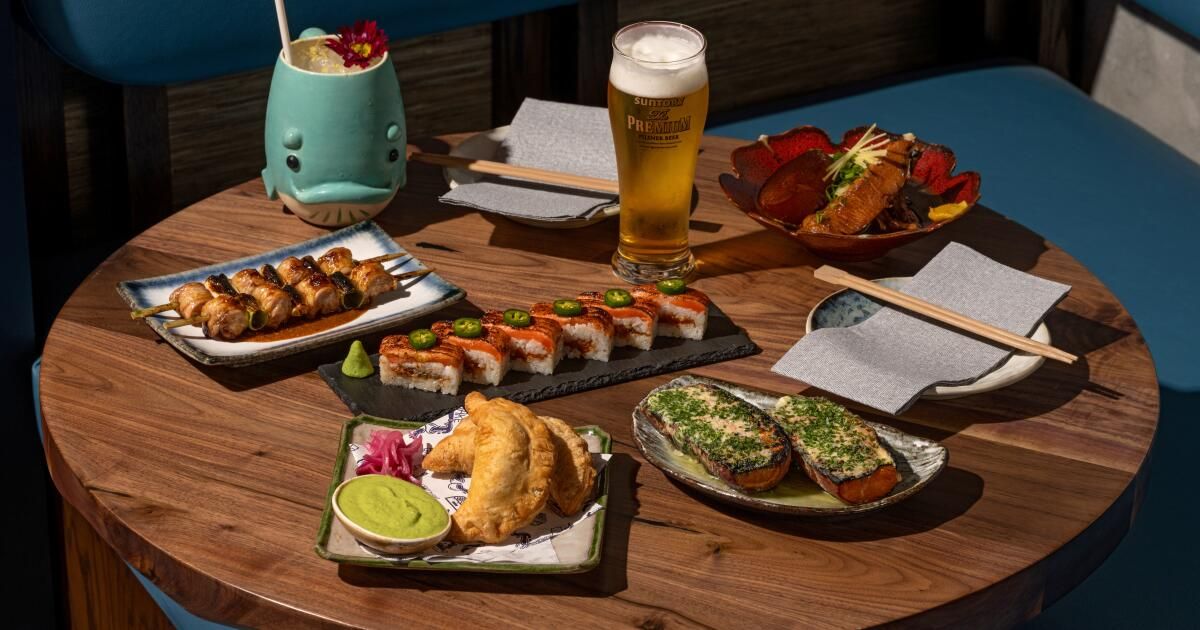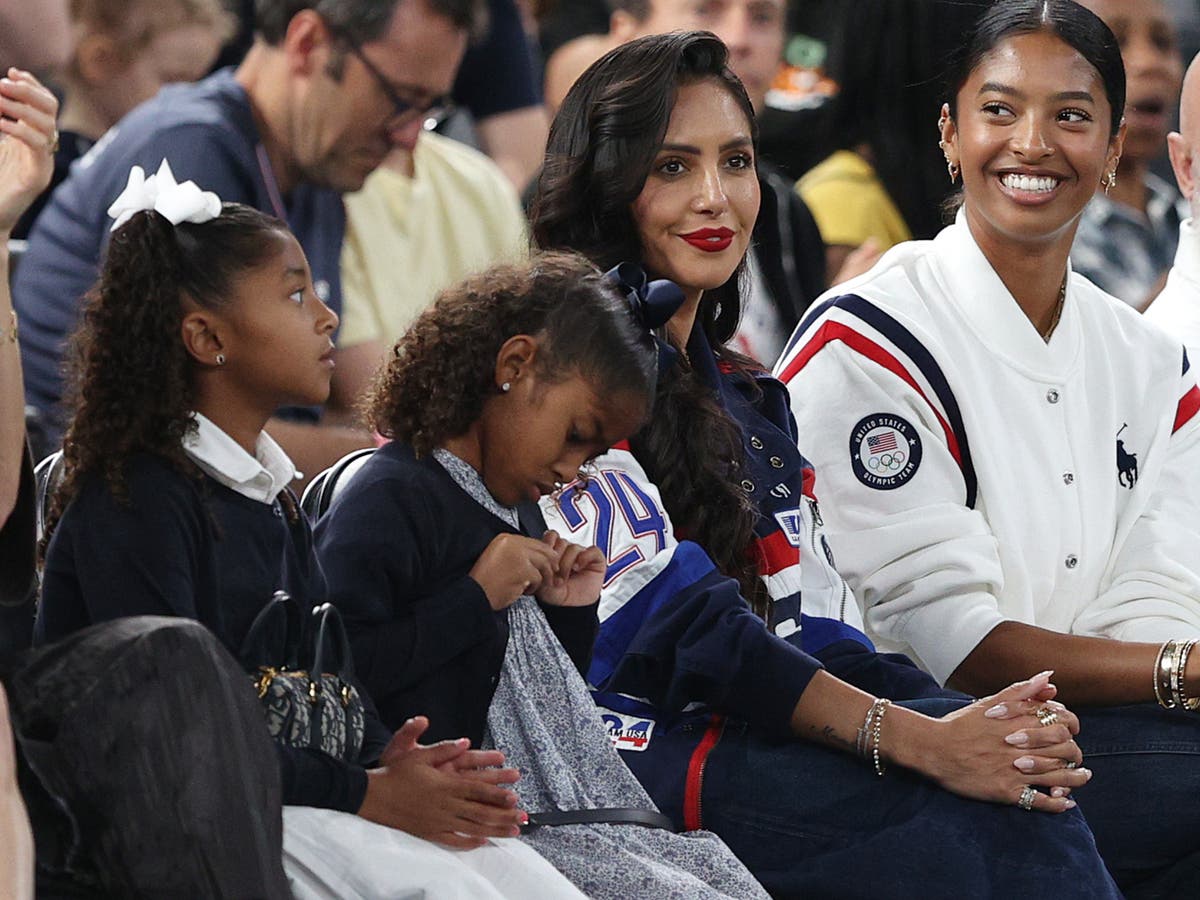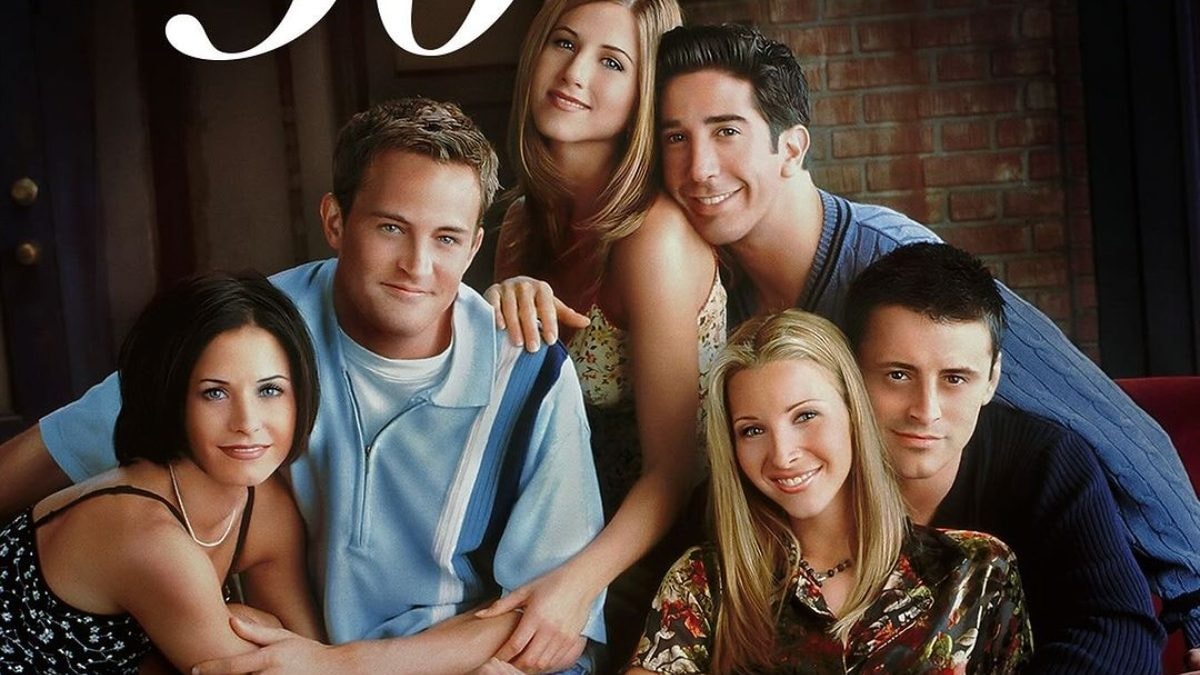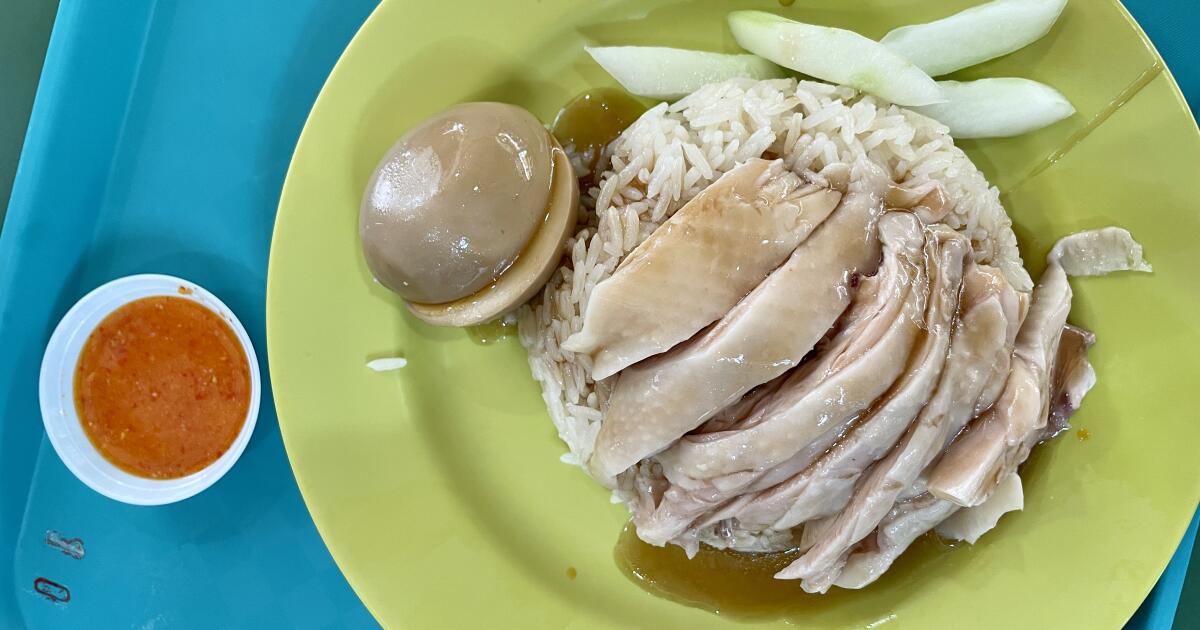The tinted glass entrance to Budonoki, which faces the intersection of Melrose and Virgil avenues, doesn't so much reflect its surroundings as stare blankly back at it. From inside, only blurry rays of neon filter through the blackened windows. He opens the door and for a moment the feeling is almost the same.
Before your eyes adjust to the darkness, you inhale the aromas of roasting meat and prepare yourself for the sound waves: competing voices that almost scream, a playlist that will continue with Frank Ocean, OutKast, Destiny's Child and the Pointer Sisters.
As your pupils dilate enough to take in the room's main details: an angled bar along the left wall, paper lanterns on the ceiling, purple and reddish-pink fluorescent lighting that's more reminiscent of glitter curated “Blade Runner 2049” than the original film. — A staff member will approach and ask if she has made a reservation. People seated along the industrial blue booths will likely squirm between closely spaced tables to get to their spots. They probably don't care. Good humor bubbles in the air. The mood can lull you into a happy place that seemed far away five minutes ago, after scouring the neighborhood for parking.
Oshizushi, or pressed sushi, with aburi salmon.
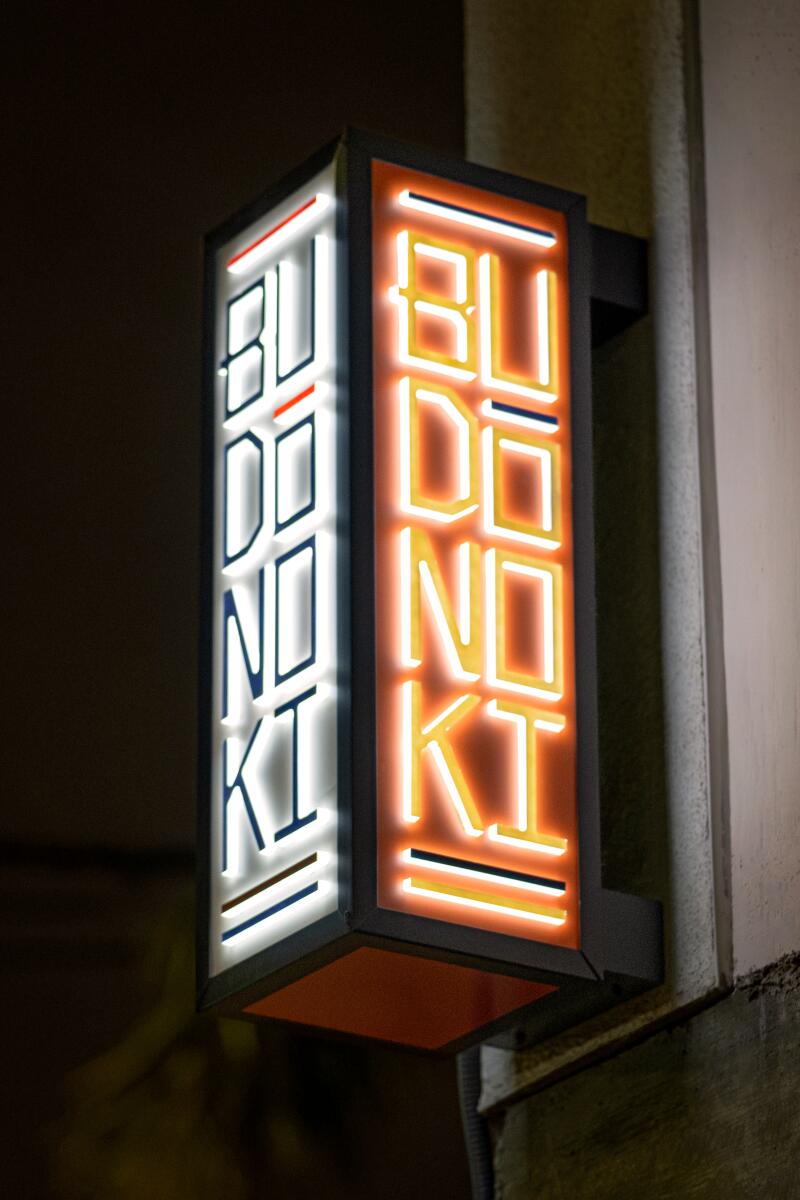
The Budonoki sign lights up the night.

A blue and pink glow casts its light on the dining room of the lively Budonoki, where good humor is bubbling.
Within moments, someone pours him water and asks what he would like to drink: an ice-cold sake cocktail or a glass of seasonal daiginjo, as fresh and floral as spring? One of several Japanese beers on tap? An ume soda without proof? Thoughts turn to the menu, nearly two dozen options categorized mostly as “sandwiches.” It's a collection of rolls, crudos, riffs on noodles and pastas, mountainous salads, and charred meats in herb and soy sauces that food-focused Angelenos will find familiar, even if the dishes don't typically appear in this exact mix or under the same name. ceiling.
Budonoki is where club meets pub, a raucous atmosphere that never loses sight of its essence as a neighborhood restaurant.
Opened since late September, the operation's quickly achieved balance between hospitality and expert cuisine demonstrates the deep experience of its partners. Front-of-house aces Eric Bedroussian and Josh Hartley have, among them, Hillstone Restaurant Group, Majordomo, Chicago's Alinea Group and Helen's Wines at Jon & Vinny's on their resumes. In the fast and pleasant service you can sense efficient corporate systems fused with a deliberate individualistic streak; No one here seems robotic, but the servers manage to maintain their concentration in a party atmosphere.

Joshikai Cocktails at Budonoki – Don't steal the cups.
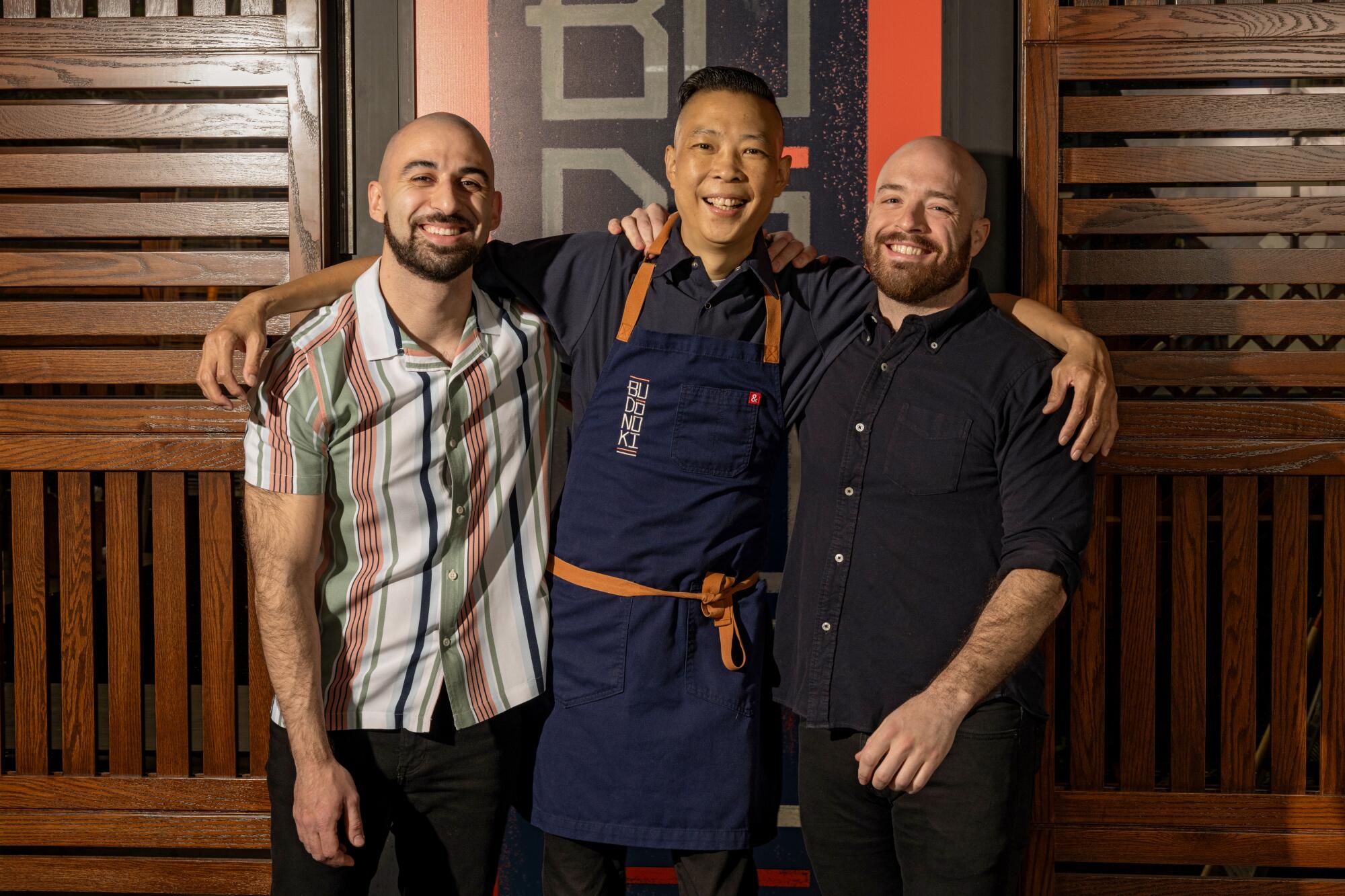
Budonoki chef Dan Rabilwongse is flanked by owners Josh Hartley, right, and Eric Bedroussian.
Chef Dan Rabilwongse grew up in Echo Park, blocks from Budonoki's location on the corner of rapidly changing Virgil Village. He cooked at some of Los Angeles' most ambitious restaurants (Urasawa and Bouchon, both closed, and current landmarks Hayato and Tsubaki), before teaming up with Bedroussian and Hartley. They started Budonoki as a pop-up, including appearances at Ototo, Tsubaki's next-door sibling, and at Melody, a two-minute walk away on Virgil. Rabilwongse perfected the soon-to-be menu staples of soriresu yakitori (grilled chicken oysters), painted with fragrant galangal sauce, and salmon oshizushi, the rectangular pressed sushi that is a favorite in Vancouver, the city Bedroussian native.
In its most permanent form, members call Budonoki an izakaya. I love what the place brings to our gastronomic city. I still bring different friends here; We feel, if not euphoric about life (a difficult task at this juncture of humanity), certainly less tense than when we arrived. Rabilwongse and chef de cuisine Justin Vu surgically unite their respective Thai and Vietnamese origins in Japanese-inspired drinks. The results feel innate to his talents and to Los Angeles.
Is Budonoki really an izakaya? Does it have that organically scruffy, after-work, third-space vibe that's not a bar but not a restaurant either? No. But labels are fluid by default in Los Angeles, and the original goals of an izakaya are likely antithetical to the expectations around a bustling restaurant in the heart of the city.
So I turn off the part of my brain that asks questions and enjoy. The team meets the constraints of a beer and wine license creatively, in the form of cocktails mixed with sake and shochu. They satisfy a spectrum of palates. The ice cream, churned in a slushy machine behind the bar, combines a crisp floral sake with blood orange, Aperol-adjacent Cappelletti Aperitivo, and koji (the Japanese fermentation starter) for a touch of mystery and nutty flavor.

Breaking into the curry pan, with a flaky, empanada-like pastry, filled with cheese and Wagyu beef.
At the opposite end (my end) is a sake and shochu martini variation studded with dry vermouth, yuzu bitters, and peppercorns. It has a strong and citrus touch, not too floral. Between these two extremes are drinks in which lychee, lime and chocolate bitters stand out, or Cocchi Torino with an orange complex, sherry and cherry vanilla bitters, or plum wine with rice milk, lemon, orange and bitters sought after, I think, as much for its cute penguin mug as for its refreshing qualities.
A few sips and I'm ready to try the restaurant's version of curry pan. These are more like empanadas than typical Japanese breaded dough pockets, and crumble to reveal a coating of springy cheese and ground Wagyu beef simmered in sweet Japanese curry. Passing the mild green chili provides a refreshing herbal contrast.
Rabilwongse's chicken oysters – prized chunks of meat from the back of the bird's thigh, named for their size and shape – are a nod to Charles Namba, for whom he worked at Tsubaki and whose soriresu yakitori set the standard in the city , although the Rabilwongse oysters The pungent sauce with galangal and tamarind gives the dish its own authority.
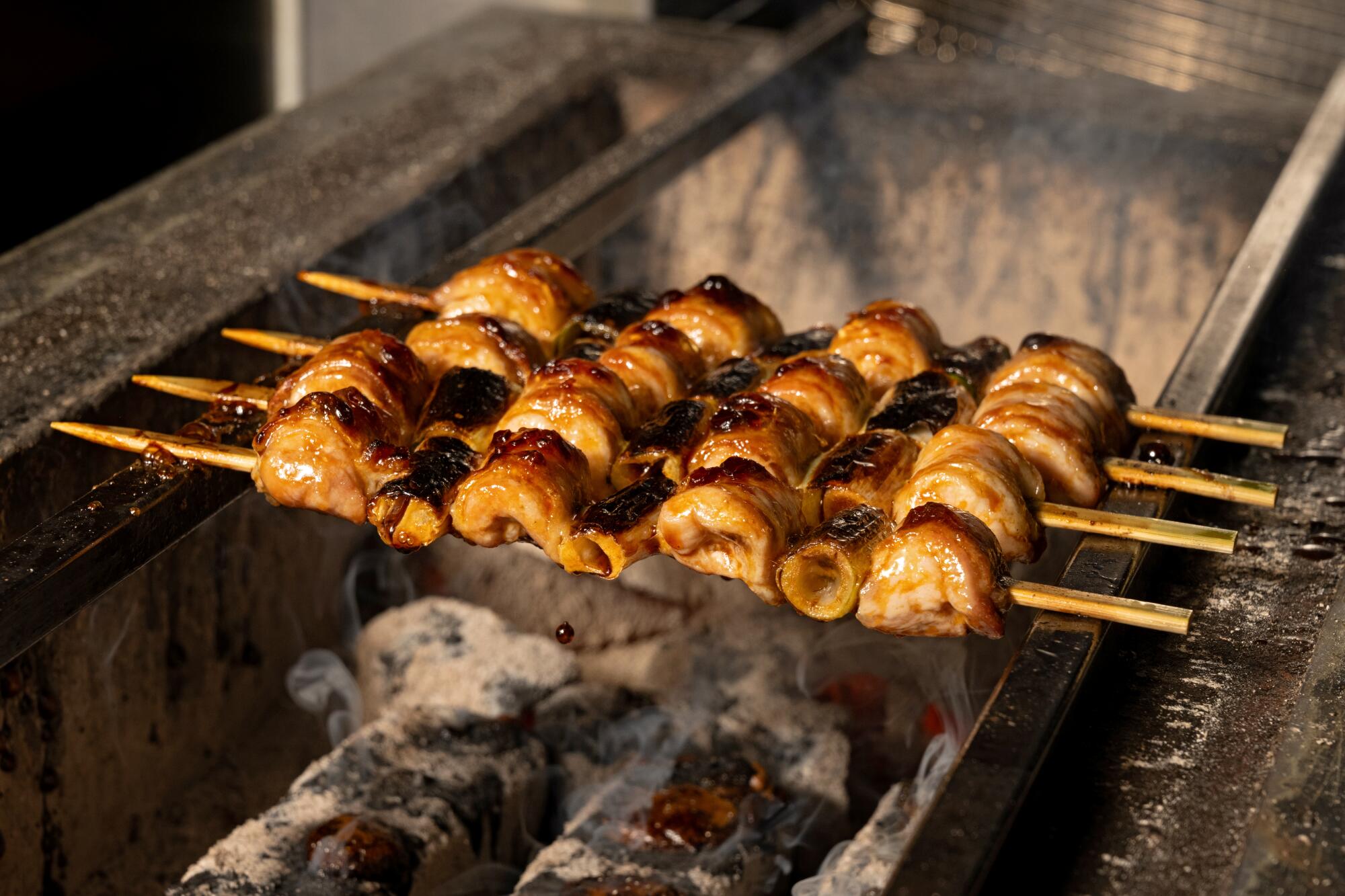
Essential: Chicken yakitori, oysters with chives grilled over a charcoal fire.
(Ron De Angelis / For The Times)

Meaty slow-cooked hamachi collar is a comforting dish served with a disc of soft, melted daikon.
Keep an eye out for the slip of paper that lists the night's specials. The best ones tend to move on to the main menu. This includes the kitchen's great underdog, a modest-looking sweet potato cooked over hot coals, smeared with miso butter and tossed with chives. My eyes open each time to its trap of umami and earthy sweetness. I look forward to the return of two excellent specials: tsukune (chicken meatballs), spongy even after absorbing the scorching smoke of the grill, and a comforting plate of slow-cooked hamachi collar, meaty in its labyrinth of gristle, paired with a piece of melted daikon.
I'm in the minority on another recent and very popular creation, “Budo-gnocchi,” in which rice cakes and slippery shimeji mushrooms take an excursion to Italy under mounds of parmesan and black winter truffles. I like the bounce of rice cakes, but in this context their chewiness overwhelms every other aspect of the dish.
I feel the same way about the plate-sized, smooth-topped seafood pancake. It surrounds so many variations on the genre – sharp-edged Vietnamese banh xeo, adaptable Japanese okonomiyaki, droopy lace Korean haemul-pajeon, Thai mussel egg hoi tod – without coalescing into its own entity. The idea almost works; The proportions of crispy and crushed need to be defined, and the flavors of the seafood could be sharpened.
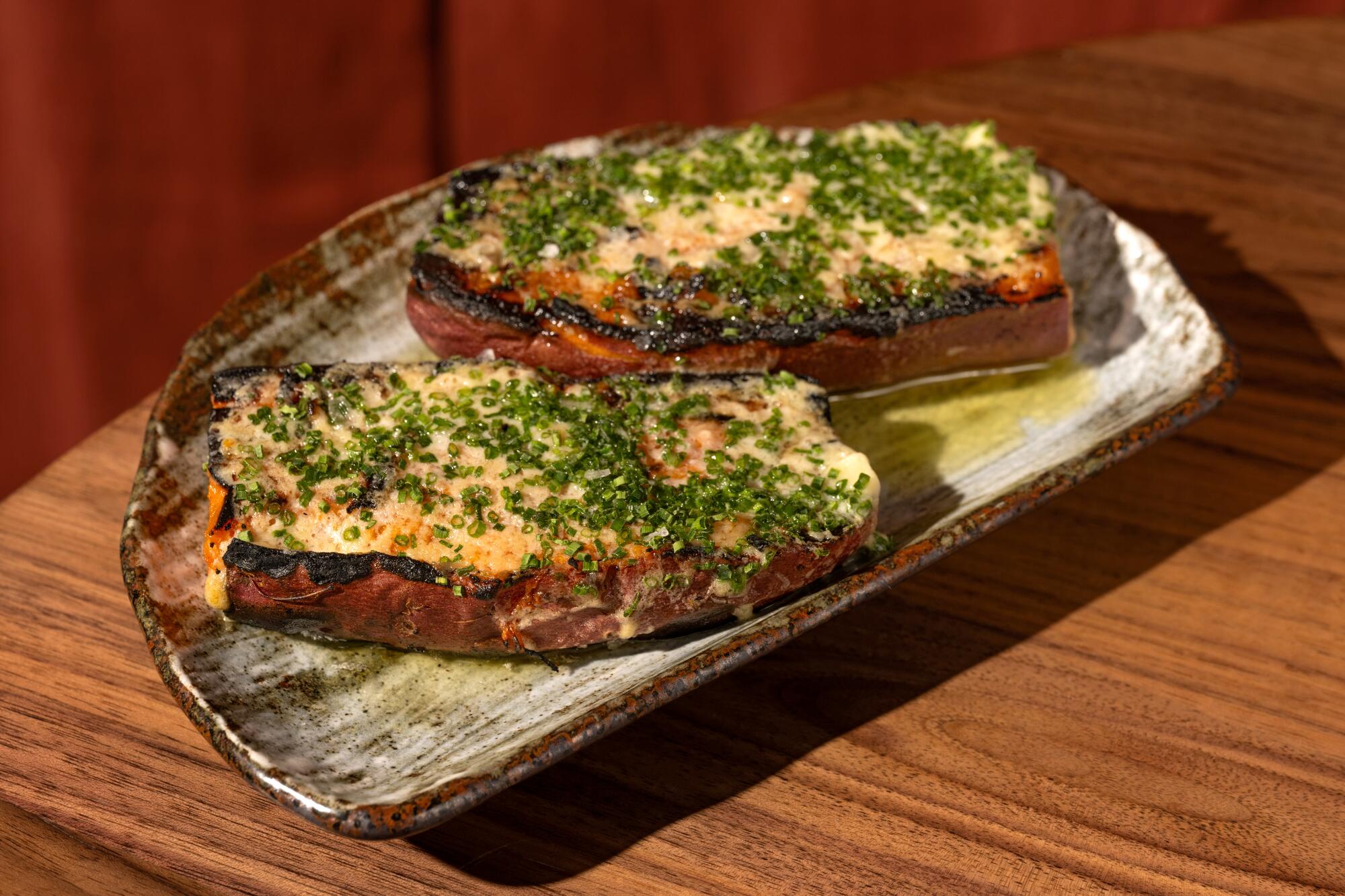
Sleeper hit: sweet potato cooked over hot coals, spread with miso butter and topped with chives.
I admire a particular idea taken from izayaka traditions: rice or noodle dishes tend to be served at the end of the meal, as a reinforcement after rounds of drinks. This includes Rabilwongse's signature oshizushi, topped with grilled salmon and topped with halos of soy-marinated sliced serrano chili. A layer of chopped, lightly seasoned salmon makes an attractively jammy look. No sushi purist would claim its virtues, but the joy matches the restaurant and the substantial portion leaves me and my dining companions completely satiated.
Soft serve ice cream, the sweet savior of restaurants without pastry chefs, comes in two flavors, lately pandan and strawberry milk. Maybe ice cream will appeal to me more when the restaurant patio opens soon for warmer weather. For now it is enough to savor the last drops of sake martini, listen to the fading chords of “Crazy in Love” and enjoy one last minute of Budonoki's hum.
budonoki
654 N. Virgil Ave., Los Angeles, (323) 928-2320, budonoki.la
Prices: Most dishes are between $14 and $26, with pressed sushi rolls $20 and soft serve $10.
Details: Open from 5:30 to 10 pm from Wednesday to Sunday. Beer, wine and sake, including excellent sake-based cocktails. Parking on the street.
Recommended dishes: Naem (Thai pork sausage with crispy rice balls and slaw), negima (chicken and oyster skewers), curry, sweet potato with miso butter.

